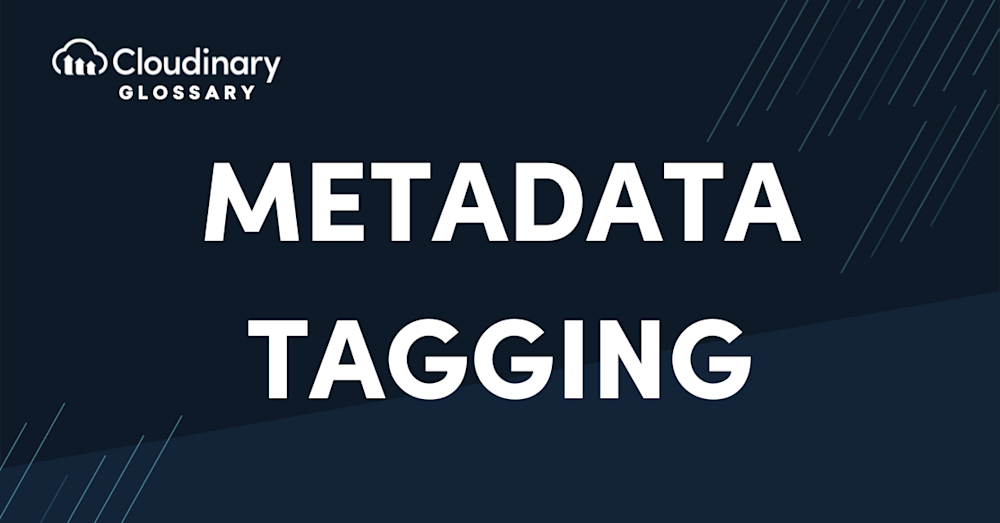What Is Metadata Tagging?
Metadata tagging can be applied across various contexts, from managing digital assets to optimizing web pages for search engines. In the realm of web development, metadata tags are HTML tags that provide essential information about a web page to help search engines understand its content and improve search rankings.
Metadata tagging is the process of adding descriptive information about data to improve its usability. Metadata is meant to be a set of data that describes other data, such as the name of an application or project, a title for a product, or any additional information that makes it easier to find and understand. In essence, metadata helps users be more efficient with their information retrieval processes by allowing them to quickly find what they need without having too many steps involved in the process.
How Does Metadata Tagging Work?
Metadata tagging is a process of identifying and classifying information in your data. Before the advent of AI, metadata was provided by the creator or uploader of the media, who would define the asset. This generally included descriptive tags that would tell other users or search indexing what they were looking at without opening individual files.
In web content management, metadata tagging involves HTML-based tags, such as:
- Title Tag: The first thing a user sees in search results, giving a preview of the page’s content.
- Meta Description: A short, accurate description (around 160 characters) reflecting the page’s content and matching user search intent.
- Meta Keywords: Tags that indicate target keywords, though they are less commonly used today.
- Meta Robots Tag: Provides instructions to search engines about whether to index a page or follow its links.
- Canonical Tag: Helps search engines avoid duplicate content issues by identifying the main version of a page.
These metadata tags play a critical role in improving search engine optimization (SEO), ensuring web pages are discoverable and visible to the right audience.
This can be done manually, but using automation paired with AI is often more efficient. AI is trained with labeled examples of the data you want to tag, allowing it to learn from this training set and then apply what it has learned when working with new or unseen data. AI can be trained at higher accuracy than humans, as well as dramatically faster than a human could go.
Benefits of Metadata Tagging
Implementing a metadata tagging system can offer many benefits for businesses and organizations. Here are some key benefits:
- Improved organization: Metadata tagging can help businesses organize digital assets by adding descriptive information such as keywords, titles, and descriptions. This makes it easier to find and access digital assets quickly.
- Search Engine Optimization: Metadata tagging, particularly in web page contexts, significantly improves SEO. Adding relevant HTML tags—like title tags and meta descriptions—helps search engines rank web pages higher and ensures the content aligns with user search intent. Businesses can enhance visibility and organic traffic with well-optimized metadata.
- Increased discoverability: Metadata tagging can help make digital assets more discoverable by search engines and users. By adding relevant tags and descriptions, businesses can improve their search rankings and make it easier for users to find their content.
- Consistency: A metadata tagging system can help ensure that all digital assets are consistent with brand guidelines by adding standardized tags and descriptions.
- Time-saving: Metadata tagging can save time by automating the process of adding descriptive information to digital assets. Many software tools can automatically generate metadata based on the asset’s content.
- Collaboration: Metadata tagging can facilitate collaboration among team members by providing a common language for describing digital assets. This makes it easier for team members to communicate about digital assets and work together more effectively.
- Analytics: Many metadata tagging systems offer analytics tools that can help businesses track asset usage, measure performance, and gain insights into their digital asset management strategy.
Metadata tagging can help businesses and organizations streamline digital asset management while saving time and money. Services like Cloudinary provide an all-in-one solution for metadata tagging, offering advanced features like automatic tagging and analytics to help businesses optimize their digital assets for maximum impact.
Automate Your Metadata Tagging with Cloudinary
Whether you’re managing digital assets or optimizing web pages, metadata tagging is a cornerstone for effective asset management and discoverability. In the case of web optimization, tools that manage HTML-based metadata tags—like title tags and canonical tags—can ensure your content is well-ranked and accessible to search engines.
Utilizing metadata tags within your digital assets can provide a vast number of benefits but can also be incredibly time-consuming if done manually. Companies can dramatically improve their products and asset management by utilizing modern tools.
Cloudinary offers a robust platform that helps organizations take control of their assets. With our Media Experience Cloud, you can store and manage all of your digital media assets, and our Intelligent Automation can automatically add metadata for you, saving you time and money.
So what are you waiting for? Get started with a free Cloudinary account today!
Additional Resources You May Find Useful:
- Convert WEBP to AVIF
- Convert GIF to AVIF
- Convert PNG to WEBP
- Convert WEBP to PNG
- Convert JPG to WEBP
- Convert WEBP to JPG
- Convert JPG to PNG
- Convert PNG to JPG
- Convert GIF to PNG
- Convert GIF to JPG
- Convert PNG to GIF
- Convert JPG to GIF
- Convert AVIF to PNG
- Convert AVIF to JPG
- Convert PNG to AVIF
- Convert JPG to AVIF




